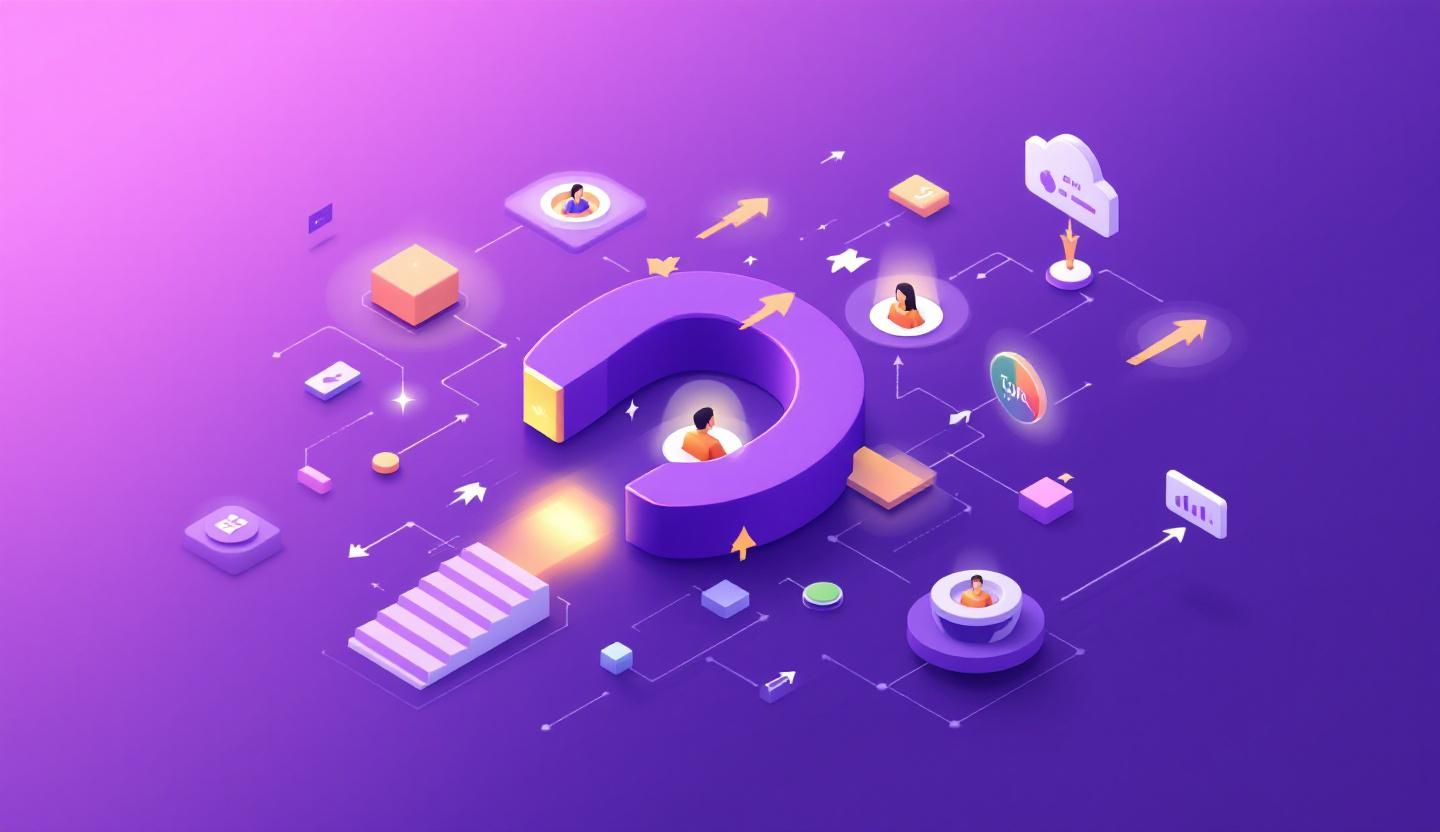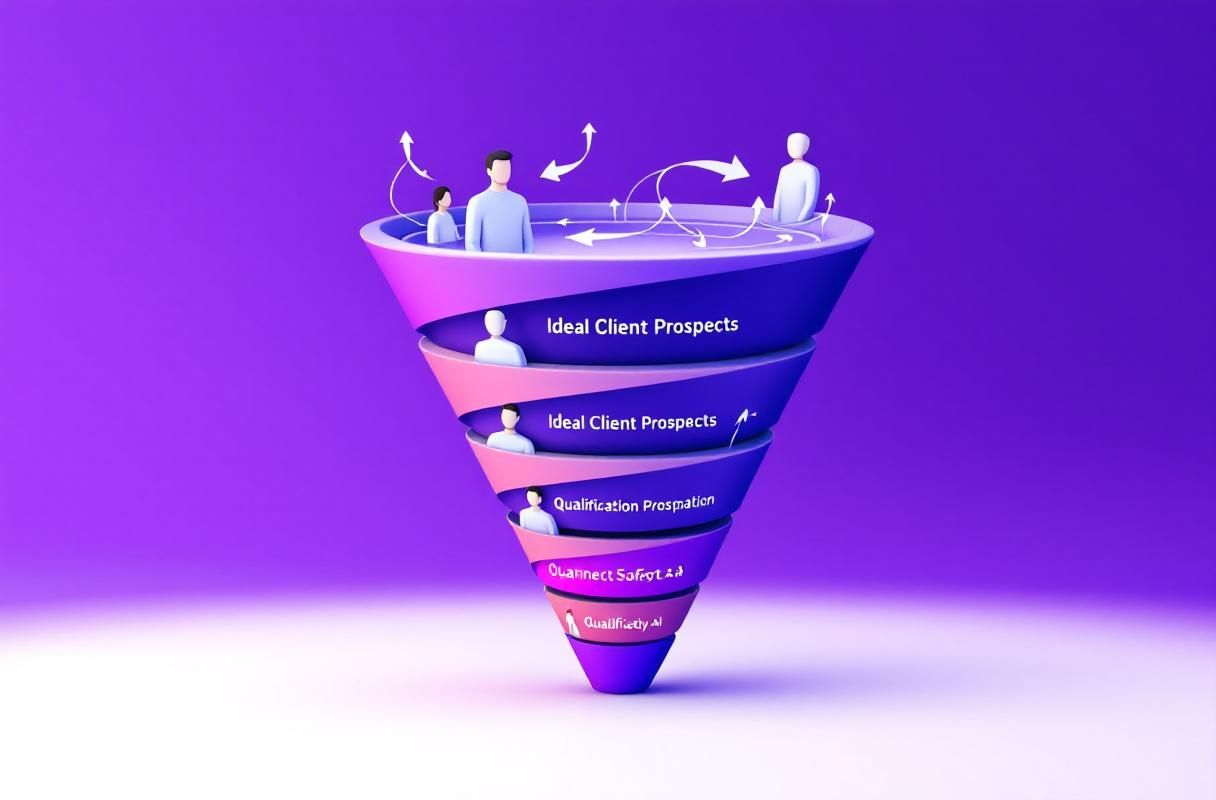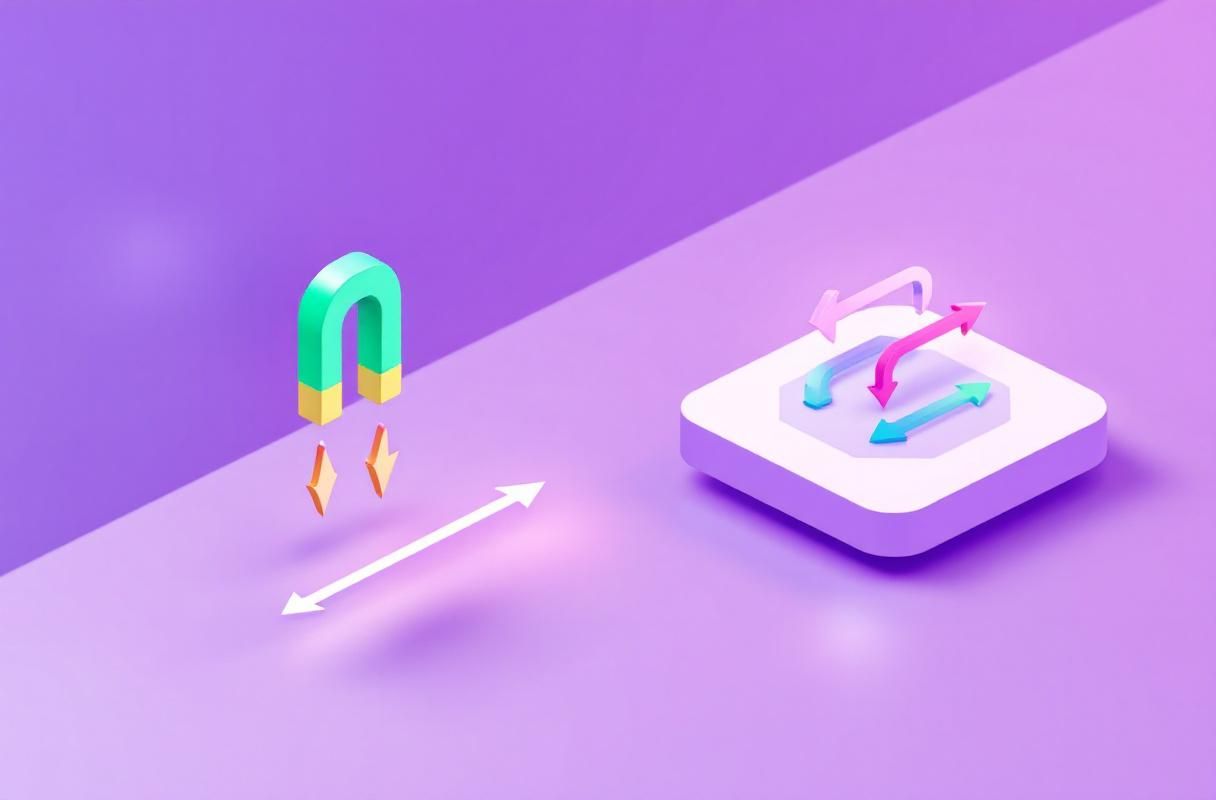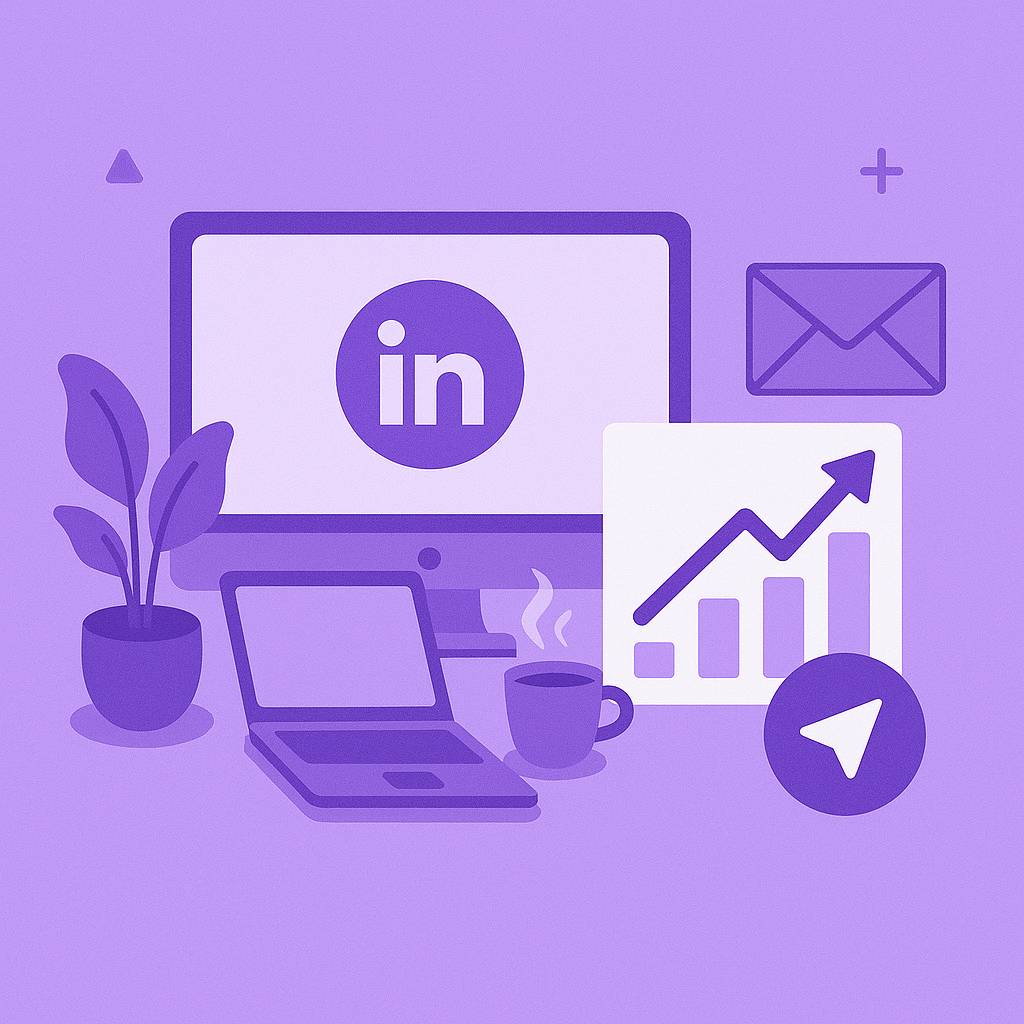Why LinkedIn Inbound Authority Makes Your Follow-Up Emails Actually Work
Transform cold follow-up emails into warm conversations by building LinkedIn inbound authority first. Discover why recognition beats persistence.

The Follow-Up Email Paradox Nobody Talks About
You've heard the statistics: follow-up emails generate 25-35% higher response rates. The first follow-up increases reply chances by 49%. So you diligently send your follow-ups—perfectly timed, well-crafted, adding value with each touchpoint. Yet your inbox remains frustratingly quiet.
Here's what the follow-up email guides don't tell you: persistence only works when you've first established recognition. Following up with someone who doesn't remember you (or worse, never knew you existed) isn't persistence—it's progressively annoying someone who's actively ignoring you.
The real question isn't "How many follow-ups should I send?" It's "Why would this person care enough to respond in the first place?"
This is where most B2B professionals have the strategy backward. They treat email as the primary channel and LinkedIn as an afterthought for initial connection. But what if you flipped it? What if LinkedIn inbound authority became the engine that makes every follow-up email exponentially more effective?
Why Cold Follow-Ups Fail (Even Perfect Ones)
Let's examine what actually happens when you send follow-up emails to someone who doesn't know you:
Email #1: "Hi [Name], I wanted to reach out because [value proposition]..." Thought process: "Who is this? Delete."
Email #2 (3 days later): "Hi [Name], I wanted to follow up on my previous email about [benefit]..." Thought process: "Still don't know you. Slightly annoying now. Delete."
Email #3 (5 days later): "Hi [Name], I realize you're busy, so I'll make this quick. [Another angle]..." Thought process: "Okay, this is persistent spam. Unsubscribe or block sender."
You followed all the best practices. You personalized. You added value. You weren't too pushy. But you fundamentally misunderstood the problem: they don't know who you are, so they have zero emotional investment in reading what you wrote.
Even the most perfectly crafted follow-up email sequence can't overcome the credibility gap of being a complete stranger.
The Recognition Threshold That Changes Everything
Here's what the data shows: when someone recognizes your name before opening your email, response rates jump by 300-400%. Not 30-40%. Three to four hundred percent.
This isn't about your email copy (though that matters). It's about crossing the recognition threshold—the moment when someone thinks "Oh, I know this person" instead of "Who is this stranger?"
Traditional advice says to "warm up" cold prospects through multiple touchpoints. But those touchpoints are still interruptions if the person doesn't value your perspective. What if, instead of interrupting them repeatedly, you positioned yourself where they're already paying attention?
This is the fundamental shift: use LinkedIn inbound engagement to build recognition and authority, then use email to continue conversations with people who already know who you are.
The LinkedIn-First Follow-Up Strategy

Instead of treating LinkedIn and email as separate channels, successful B2B professionals now use them in sequence—with LinkedIn establishing authority first.
Phase 1: Build Authority Before You Need It
Rather than reaching out cold, you invest 30-60 days building visibility in the conversations your ideal clients are already following. This isn't about posting your own content (though that helps)—it's about strategic engagement that demonstrates expertise.
When your target prospect sees your thoughtful insights on five different posts from thought leaders they respect, something powerful happens: you become a familiar, credible voice. You're no longer a stranger. You're someone who clearly understands their industry and challenges.
This positioning does something that no follow-up email technique can accomplish: it makes them actually want to hear from you.
Phase 2: Initial Outreach from a Position of Recognition
Now when you send that first email, the context is completely different:
Cold Approach: "Hi Sarah, I came across your profile and thought you might be interested in..." Thought process: "Generic sales pitch. Delete."
Authority-First Approach: "Hi Sarah, I've noticed you're actively engaged in discussions about [specific topic]—I've been following the same conversations and would love to share some insights we've gathered from working with similar companies..." Thought process: "Wait, I recognize this name from LinkedIn. They've had valuable comments on those posts I was reading. Let me see what this is about."
Same person, same offering—but completely different reception. Because you're not unknown anymore.
Phase 3: Follow-Ups That Actually Get Read
This is where the 25-35% boost from follow-ups becomes real instead of theoretical. When someone has genuine recognition of who you are, follow-ups serve their intended purpose: reminding a busy person about a conversation they actually found interesting.
Follow-up #1 (3 days later): "Hi Sarah, following up on the insights I mentioned. I noticed you commented on [Creator Name]'s post about [topic] this morning—that's exactly related to what we've been discussing. Here's specifically how we've helped similar companies..."
You're not just following up—you're demonstrating continued attention to what matters to them. Each email reinforces that you're paying attention, you understand their world, and you're not just running a spray-and-pray campaign.
The response you get isn't polite dismissal. It's genuine engagement, because the person on the receiving end actually wants to continue the conversation.
Why This Multi-Channel Approach Outperforms Email-Only
The traditional email follow-up strategy operates in a vacuum. You send emails into the void and hope for responses. The LinkedIn-first approach creates context that makes every subsequent email more effective.
1. You're Working With Psychology, Not Against It
Human beings are wired to respond positively to familiarity. The mere exposure effect shows that we develop preference for things simply because we're familiar with them. By building LinkedIn visibility first, you're leveraging this psychological principle.
When your email arrives from a name they've seen multiple times in positive contexts, their brain says "I know this person" rather than "Stranger danger." This subconscious recognition is worth more than the most persuasive copy.
2. Your Value Proposition Is Already Validated
When you reach out cold, you have to prove your expertise and credibility from scratch. Every claim you make is met with natural skepticism—"Sure, everyone says that."
When you reach out with established LinkedIn authority, you've already demonstrated expertise through your engagement. Your prospect has seen evidence of how you think, what you know, and the value you provide. Your email isn't trying to prove credibility—it's offering to apply established expertise to their specific situation.
This shifts the conversation from "Why should I trust you?" to "How specifically can you help me?"
3. You Can Reference Shared Context
Cold follow-ups struggle because you have nothing to reference except your previous ignored emails. Each follow-up basically says "Remember that thing you didn't care about? Here it is again!"
LinkedIn-first follow-ups can reference real, current context:
- "I saw your comment on [Post] about [Challenge]—that's exactly what we specialize in solving..."
- "The discussion on [Topic] that you engaged with yesterday touches on the exact issue I wanted to discuss..."
- "Since you've been following [Creator], you're probably familiar with the approach they advocate—here's how we implement that practically..."
You're not inventing connection—you're highlighting existing common ground.
4. Multiple Touchpoints Feel Natural, Not Intrusive
In a cold email sequence, each subsequent email feels more aggressive. "I already ignored this person twice. Why are they still emailing me?"
When you're maintaining LinkedIn visibility while also sending emails, the combined touchpoints feel like natural presence rather than aggressive pursuit. You're not just the person who keeps emailing—you're the person they keep seeing add value in their feed, who also happens to have reached out about something relevant.
This changes the perception from "pushy salesperson" to "active industry participant who has something specific to discuss."
How ConnectSafely.ai Builds the Authority That Makes Email Work
The challenge with the LinkedIn-first approach is time. Manually identifying high-value conversations, crafting thoughtful comments, and maintaining consistent presence requires 2+ hours daily—time you don't have when you're also running email campaigns, managing sales conversations, and actually delivering your services.
Strategic Automation for Authority Building
ConnectSafely.ai solves this by automating the visibility work while maintaining the authenticity that builds real authority. Instead of automating cold outreach (which adds to the noise), we automate strategic positioning (which cuts through it).
Our platform identifies where your ideal clients are already engaging, analyzes the conversations they care about, and ensures you're consistently visible with thoughtful, contextually relevant insights—all while you focus on the follow-up emails and sales conversations that our positioning enables.
The Integration Strategy That Compounds Results
Here's how the complete strategy works in practice:
Weeks 1-4: Authority Foundation ConnectSafely.ai maintains consistent engagement in conversations your ICP follows, building recognition and demonstrating expertise. You're not reaching out yet—you're positioning.
Week 5: Initial Email Outreach Now you reach out via email, but from a position of recognition. Your prospects have seen your name and insights multiple times. Your open rates are 2-3X higher than cold outreach because familiarity drives curiosity.
Weeks 6-8: Follow-Up Sequence + Continued Visibility Your follow-up emails reference current LinkedIn discussions. Meanwhile, your LinkedIn engagement continues to reinforce your authority. Each email and each LinkedIn comment compounds the others' effectiveness.
Ongoing: Inbound + Outbound Integration As your LinkedIn authority grows, you need fewer cold emails because more prospects reach out to you first. Your follow-up strategy shifts from "chasing cold leads" to "nurturing warm inbound interest."
Within 3-4 months, the ratio flips: instead of 80% of your pipeline coming from cold outreach with low conversion, 60-70% comes from inbound leads with 8-9X higher conversion rates.
The Data: Why LinkedIn + Email Beats Email Alone

Let's compare the mathematics of both approaches:
Email-Only Follow-Up Strategy:
- Cold email open rate: 15-20%
- Response rate (non-AI personalization): 2.60%
- Follow-up boost: +25-35% = 3.5% total response rate
- 1,000 emails → 35 responses → 6 qualified conversations → 1 closed deal (1.7% close rate)
- Cost per customer: High (time, email tools, list building)
- Reputation impact: Neutral to negative (seen as spam)
LinkedIn Authority + Email Strategy:
- Email open rate (with LinkedIn recognition): 45-60%
- Response rate (with established authority): 15-25%
- Follow-up boost: +25-35% = 20-30% total response rate
- 200 emails → 50 responses → 25 qualified conversations → 4 closed deals (14.6% close rate)
- Cost per customer: Lower (higher conversion, fewer emails needed)
- Reputation impact: Highly positive (seen as industry expert)
The LinkedIn-first approach doesn't just improve email performance incrementally—it fundamentally changes the economics of your outreach.
Getting Started: Building Email-Amplifying LinkedIn Authority
The practical implementation is more straightforward than most people assume:
Step 1: Define Your Email Target Audience
Who are you actually trying to reach via email? Get specific about industries, roles, company sizes, and challenges. This targeting drives both your LinkedIn positioning and your email lists.
Step 2: Identify Where They Already Pay Attention on LinkedIn
What thought leaders do they follow? What conversations consistently engage them? What topics generate the most discussion in your target market? Map the LinkedIn ecosystem your prospects already inhabit.
Step 3: Build Strategic Visibility Consistently
Show up regularly in those high-value conversations with insights that genuinely add value. The goal isn't to pitch—it's to position yourself as someone who thinks deeply about the challenges your audience faces.
Consistency matters more than volume. Three thoughtful, well-targeted comments per day outperform 30 generic ones.
Step 4: Launch Email Outreach from Position of Authority
After 30-60 days of LinkedIn visibility, your initial emails land completely differently. Reference the shared context, acknowledge the common conversations, and extend the dialogue you've been having publicly into a private discussion of specific applications.
Step 5: Integrate Follow-Ups with Ongoing LinkedIn Presence
Your follow-ups aren't happening in a vacuum—they're part of an ongoing multi-channel conversation. Each email reinforces what they're already seeing on LinkedIn. Each LinkedIn comment makes your next email more likely to get opened.
Within 90 days, you'll notice the shift: fewer emails required, higher response rates, warmer conversations, and a growing number of inbound inquiries that don't require follow-ups at all because prospects are reaching out first.
The Strategic Shift: From Persistence to Positioning
The traditional view of follow-up emails frames it as a persistence game: keep emailing until you break through. But this approach increasingly fails as inboxes become more crowded and prospects become more selective.
The new model frames it as a positioning game: establish authority and recognition first, then use email to extend conversations with people who already value your perspective. In this model, follow-ups do what they're supposed to do—remind interested people about valuable opportunities—instead of progressively annoying strangers.
This isn't about abandoning email. It's about making email dramatically more effective by building the LinkedIn authority that turns cold prospects into warm ones before you ever hit send.
The Choice: Keep Following Up with Strangers or Start Conversations with Connections
Every email you send represents an opportunity—either to be ignored by someone who doesn't know you, or to continue a conversation with someone who already values your expertise.
The follow-up email techniques haven't changed. Personalization, value-adding, strategic timing—these all still matter. But they only work when applied to prospects who have a reason to care who you are.
LinkedIn inbound authority gives them that reason.
ConnectSafely.ai makes building that authority scalable and sustainable, so you can focus on the high-value work of sales conversations instead of the low-yield work of chasing cold prospects. Strategic targeting, AI-powered engagement, and consistent visibility—building the recognition that makes every email more effective.
Ready to transform your follow-up emails from ignored persistence to welcomed conversation? Start your free trial and see what happens when LinkedIn authority meets email outreach.
Key Takeaways
- Follow-up emails only work when prospects already recognize and value who you are—persistence without recognition is just annoyance
- LinkedIn inbound authority builds the familiarity and credibility that makes email outreach 3-4X more effective
- The LinkedIn-first strategy uses engagement to establish expertise before email outreach begins
- Multi-channel touchpoints (LinkedIn + email) feel like natural presence instead of aggressive pursuit when you're adding value on LinkedIn
- Inbound leads from LinkedIn authority convert at 14.6% vs. outbound email's 1.7%—an 8.6X improvement
- Strategic automation can build LinkedIn visibility at scale while maintaining authenticity that drives real authority
- The future of B2B follow-up isn't better email tactics—it's LinkedIn positioning that makes prospects want to hear from you
